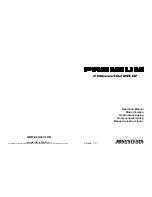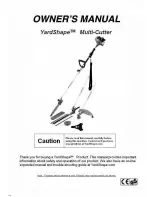
R&S ESH2-Z3
Safety Instructions
1156.6124.32 SI
E-1
Safety instructions on the use of Passive Voltage Probe ESH2-Z3
The International Electrotechnical Commission (IEC) for measuring instruments has replaced
the IEC348 standard by the more stringent IEC61010-1 standard. Due to this change, we see it
necessary to draw your attention again to the following safety-relevant information:
1. The new IEC61010-1 standard specifies overvoltages in four overvoltage classes according to the
site of operation.
Please note that the passive voltage probe has been exclusively designed and tested for use in
power supply circuits of overvoltage class II only.
(Networks/circuits of overvoltage class II are normally all circuits following power distributors located
on floors or lines from main distributors which are more than 15 m away from the latter.)
2. Use the probe exclusively for measurements on networks fused with max. 16 A.
3. Passive Voltage Probe ESH2-Z3 includes the following safety measures:
- Y capacitor (breakdown voltage 2.7 kV)
- protective insulation of probe casing
- guard collar of probe to provide protection against accidental slipping of operator's hand
Prior to using the probe, check
- whether the protective insulation around the probe is intact
- whether the guard collar is rigidly fixed
- whether the Y capacitor is intact: by measuring the DC resistance between the probe tip and the
inner cable conductor to the test receiver; the DC resistance should be >1 M .
- whether the ground terminal is tightly screwed to the probe casing.
4. Make sure that the ground cable is always tightly screwed to the probe. Prior to connecting the
probe to the AC supply, make a connection between the ground cable and the ground which is
equivalent to a protective conductor connection. Another safety measure that can be taken to protect
the user is to connect the probe to a test receiver which itself is linked to protective earth.
5. We strongly recommend to use an isolating device to ensure that prior to connecting the probe to
the AC supply its power connector is free of voltage. This equally applies to disconnecting the probe
from the AC supply.
6. Only skilled and qualified personnel shall use this probe in networks with voltages constituting a
shock hazard.



































